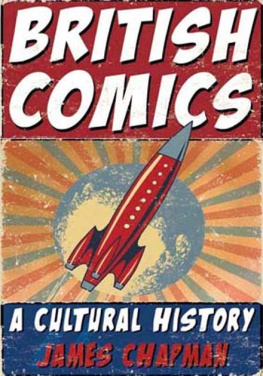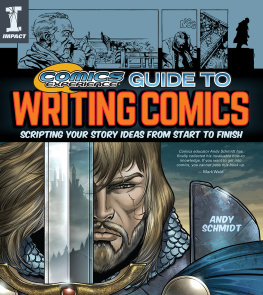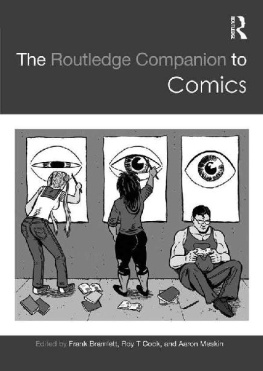SEE WHAT I MEAN
HOW TO USE COMICS TO COMMUNICATE IDEAS
Kevin Cheng

See What I Mean: How to Use Comics to Communicate Ideas
By Kevin Cheng
Rosenfeld Media, LLC
457 Third Street, #4R
Brooklyn, New York
11215 USA
On the Web: www.rosenfeldmedia.com
Please send errors to:
Publisher: Louis Rosenfeld
Managing Editor: Marta Justak
Interior Layout Tech: Danielle Foster
Cover Design: The Heads of State
Indexer: Nancy Guenther
Proofreader: Sue Boshers
2012 Rosenfeld Media, LLC
All Rights Reserved
ISBN: 1-933820-27-6
ISBN-13: 978-1-933820-27-9
LCCN: 2012950615
Printed and bound in the United States of America
DEDICATION
To Coley, who always sees what I mean. And to Mum and Dad, who never told me to stop drawing silly cartoons.
HOW TO USE THIS BOOK
As this is a book about using comics to communicate ideas, you might expect that the book itself would be in comic form, much like Scott McClouds Understanding Comics. Thats partially what I did with this book, but everyone learns and digests information differently so I decided to actually provide two different ways to read the book. With the exception of the first and last chapters, which are both full comics, each chapter has two versions. The beginning of each chapter has a short comic that summarizes the material in that chapter, followed by much more in-depth writing on the topic. Youll also find that the art in the summaries is deliberately quite rough to illustrate just how little you need to draw to get ideas across.
Which version you choose to read is completely up to you. You might read only the comics, all the comics summaries first followed by the text, or everything in page order. Regardless, I think you will get something from it.
While there are many books exploring how to make comics for aspiring professionals and other books exploring the science and inner workings of comics, this book differs because its focused on applying comics for practical uses. Its a mix of How do I do it? Why should I use this? and When should I use it?
Youll learn why comics are a powerful medium. Then youll learn how to create comics through step-by-step examples. And finally, youll discover the different ways to apply comics and how to convince others to try using them. Throughout the book, Ive included examples and case studies from other experts in design, comics, animation, and more.
Who Should Read This Book?
This book is written for anyone involved in dreaming up ideas and making those ideas a reality. If youre a leader in your team or company, comics can help you convey your high-level vision to the team. If youre a designer or engineer, comics can help you understand your product better and speed up development. For marketers, youll see how comics can be used to teach your customers about your product. You dont need to be the one making the comics to get value from this book, but you might be surprised how easy it is to create them yourself.
Whats in This Book?
This book is organized into three main sections.
Why Comics? The first couple of chapters explore what comics are and why theyre a powerful medium. Understanding the mediums strengths can help you decide when its appropriate to use it.
Making a Comic. The next five chapters go through how to create comics. Well carry one example through from beginning to end over the course of the chaptersstarting with basic drawing techniques, followed by defining and writing the story, and ending with some tips on how to lay out and polish the comic.
Using Comics. The final chapters explore some other applications for comics including marketing, user research, and conveying vision. Theres also a chapter specifically dedicated to how you can convince other people to try out comics.
What Comes with This Book?
This books companion website ( rosenfeldmedia.com/books/comics ) contains links to a number of resources such as articles, templates, software, research, and tools. Ive also provided some templates in an appendix at the end of this book. Occasionally, Ill run half- and full-day hands-on workshops for creating comics. The schedule for my speaking engagements is also listed on the site.
rosenfeldmedia.com/books/comics ) contains links to a number of resources such as articles, templates, software, research, and tools. Ive also provided some templates in an appendix at the end of this book. Occasionally, Ill run half- and full-day hands-on workshops for creating comics. The schedule for my speaking engagements is also listed on the site.
Weve also made the books diagrams, screenshots, and other illustrations available under a Creative Common license for you to download and include in your own presentations. You can find these on Flickr at  www.flickr.com/photos/rosenfeldmedia/sets/ .
www.flickr.com/photos/rosenfeldmedia/sets/ .
FREQUENTLY ASKED QUESTIONS
What tools do I need?
To create a comic, you need a piece of paper and a pencilnothing more. However, you do need to define a few things up front such as whom youre making the comic for and what youre trying to get your readers to do. Are you trying to get everyone on the same page? Get customers to sign up for your site? Communicate an internal process to your team? Educate someone on a topic? In addition to answering these questions, it will be helpful to know something about your characters through research and personas. covers a lot of the tools you can use.
What if I cant draw?
If you can draw a stick figure and a smiley face, youre already set. In , I explain just how little you need to get started, and I also give a few tips to help you feel more comfortable.
When should I use comics?
I dont advocate that comics should be used for everything, but there are scenarios where comics are appropriate at every point in a product cycle. Whether its before youve started building a product and are still defining the requirements, in the midst of iterating on a product, or ready to launch a product, comics can have a place. Once you understand the strengths of comics and read about how others are using them, youll be the best judge of when theyre appropriate for your situation. You might want to check out where I discuss some applications of comics.
How do I convince my client or team to use comics?
If youre reading this book, then I imagine Im halfway to convincing you that comics are useful, but you may be wondering whether youll be able to convince others to let you spend time drawing comics. This is probably the most common question I get when I talk about comics at conferences and workshops. Thats why Ive dedicated all of to helping you. Youll be armed with data, examples of other companies using comics, and a few tips on how to communicate your goals.
FOREWORD
And you who wish to represent by words the form of man...relinquish that idea. For the more minutely you describe, the more you will confine the mind of the reader, and the more you will keep him from the knowledge of the thing described. And so it is necessary to draw...
Leonardo da Vinci, 1487
I think about this a lot. This is Leonardo, one of historys greatest thinkers, telling us that just talking is a bad way to describe an idea and often obscures its real essence. Leonardo is worth listening to. Here is the guy who invented the parachute, designed the helicopter, architected fortresses, engineered never-before-seen machines of every kind, and knew more about human anatomy than most doctors do today. And he also painted the Mona Lisa.
What would Leonardo think of the way were taught to think today? Hed hate it. Modern education tells us weve got to become linear A-B-C specialists: if we want to engineer, we study calculus and computational fluid dynamics; if we want to design, we study human factors and heuristics; if we want to paint, we study painting. But Leonardo studies all these thingsand he came up with new solutions to old problems every day. What did Leonardo know that we dont?











 rosenfeldmedia.com/books/comics ) contains links to a number of resources such as articles, templates, software, research, and tools. Ive also provided some templates in an appendix at the end of this book. Occasionally, Ill run half- and full-day hands-on workshops for creating comics. The schedule for my speaking engagements is also listed on the site.
rosenfeldmedia.com/books/comics ) contains links to a number of resources such as articles, templates, software, research, and tools. Ive also provided some templates in an appendix at the end of this book. Occasionally, Ill run half- and full-day hands-on workshops for creating comics. The schedule for my speaking engagements is also listed on the site.